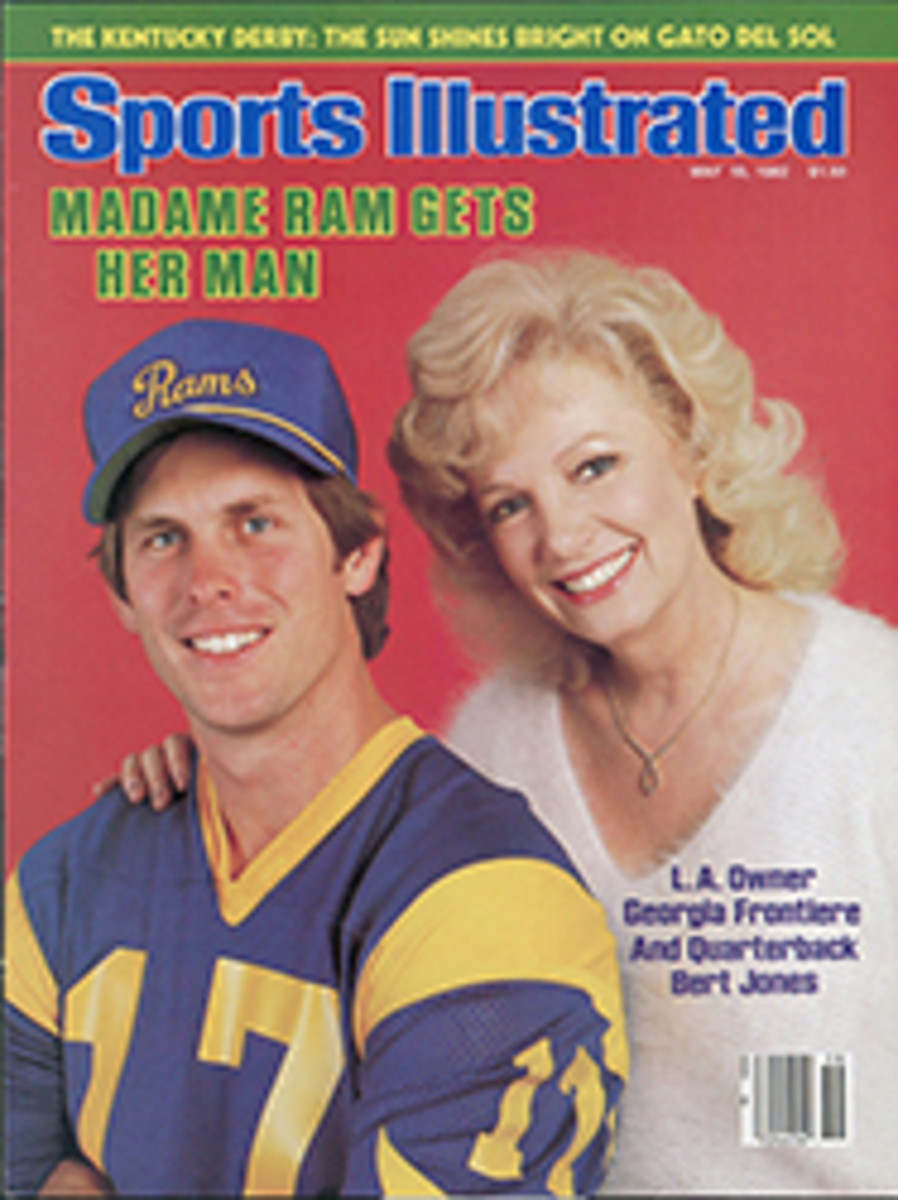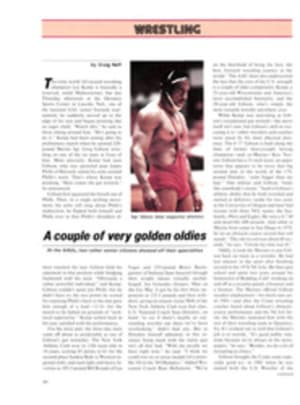
A COLLEGE BASKETBALL SHOT CLOCK IS A TIMER WHOSE TIME HAS TRULY COME
Propose a shot clock to most college basketball fans and they act as if you've suggested putting long skirts on the cheerleaders. They seem to fear that any kind of clock—24-, 30-, 45-or 60-second—might botch up their cherished game.
But the arguments for a shot clock are more persuasive than ever, because, despite this year's tense North Carolina-Georgetown NCAA final, college basketball is becoming a study in tedium. Scoring has been declining since 1973, and this season it fell to the lowest per-game average in 30 years (111.5 for both teams).
The very nature of basketball as a team sport has been subverted, as five-man efforts to make field goals have been replaced by one-man efforts to make foul shots. In the past decade, the number of field-goal attempts per game has decreased 20%, while the number of free-throw attempts has increased 9%.
Many observers blame these trends on overly conservative coaches who are relying on zone defenses and cautious offenses. But whatever the cause, game after game has been played either with both teams exhibiting extreme patience or with the team ahead playing keep-away and parading to the foul line. Spectators have suffered through such actionless occasions as Missouri beating Kansas 41-35 and 42-41; Virginia beating North Carolina State 39-36 and 45-40; Notre Dame making 213 passes before shooting in one possession against Kentucky; and North Carolina making 15 foul shots and no field goals in the last 12 minutes of its game at Clemson.
But one league has sensibly gone against this flow. The six schools in the Sun Belt Conference—South Alabama, Alabama-Birmingham, Jacksonville, Virginia Commonwealth, North Carolina-Charlotte and South Florida—have been using a 45-second shot clock for four seasons, to the acclaim of coaches, players and fans. The Sun Belt's positive experience, combined with the other compelling reasons that can be mustered in favor of the shot clock, proves that the 45-second clock is a timer whose time has come.
Here are the most common objections to the clock, and why each can safely be overruled:
1. College basketball is at peak popularity, and we shouldn't tamper with success.
•Even dedicated fans can't enjoy a game played in slow motion. And indeed, the Sun Belt, after having its 1978 tournament end in a 22-20 game, adopted the clock specifically to keep its teams from alienating fans with stallball. Says South Alabama Coach Cliff Ellis, "When a family spends $40 on tickets, food and beverages, a 22-20 game won't make them happy. We're in the entertainment business, and that's not entertainment."
Also, slowdowns are as unpopular with players as with fans. While players don't mind dribbling, passing and taking foul shots, they occasionally like to try for a field goal as well. "A stalling game is a game between coaches," says Bob Wenzel, the Jacksonville coach. "But the clock gives the game back to the players."
2. A clock will make the patterned college game too much like the high-scoring, run-and-gun pro version.
•A shot clock does boost scoring to a certain extent by producing continuous attempts at field goals. In the four years of its trial, no Sun Belt team has been able to win a conference game without scoring at least 50 points. And this year, scoring in Sun Belt regular-season conference play (141.8 for both teams) averaged about 20 points more per game than in leagues like the ACC and Big Ten.
Nevertheless, with a 45-second clock, deliberately paced, moderately low-scoring games are still possible. There have been many Sun Belt games in which the winner scored in the 50s or 60s and wasn't called once for a clock violation.
The clock even permits a degree of stalling. Says J.D. Barnett, coach of Virginia Commonwealth, "When I want to milk the clock, I just tell my team to make 10 passes before going for the basket." Adds Ellis, "The clock doesn't let you freeze, but it lets you tease."
3. If a clock were adopted, the colleges would have to outlaw zone defenses, because an offense wouldn't have time to create a good shot against a zone.
•Any coach who can't figure out how to penetrate a zone within 45 seconds should give his Cadillac back to the alumni. "There's no problem attacking a zone in that length of time," says UAB Coach Gene Bartow. "You can do anything you want, and do it several times."
Sun Belt teams have almost never had difficulty playing beat the clock, no matter what defense they faced. Of the 17,085 shots taken in 164 conference games this year, 95% were put up during the first 29 seconds of possession. And in all those games, a total of only 19 clock violations were called. Wenzel says, "You rarely notice the clock. Outside of eliminating the atrocity of total offensive inaction, it isn't a factor."
4. Underdogs need the delay game, because it helps them compete with better teams by letting less-talented clubs control the ball and thus shorten the game.
•Underdogs can often use a slowdown to keep the score respectable or to pull an upset, but when stalling is a gimmick that lasts most of the game, it cheapens the value of a win.
And while the delay game can help an underdog compete, it can also help a superior team hold a lead. Stalling, after all, wasn't perfected by weaklings, but by, among others, Coach Dean Smith's powerful North Carolina teams. According to Smith, from 1966 through 1972 the Tar Heels went to their four-corners delay offense 107 times to protect a lead, and won all but twice. This year they didn't lose a single game after going to their delay. The many underdogs they beat could hardly have done worse if a clock had been used.
5. A clock would be redundant, because there are already rules to force action in the game.
•The current rules to force action are too clumsy and complicated. They require referees to monitor the position of the ball on the court, make 5-and 10-second counts, gauge the distances between offensive and defensive players, judge the degree of action, issue warnings and call held balls (tie-ups) and technical fouls.
This cumbersome machinery overburdens officials, and it forces only ball movement, not attacks at the basket. With a clock on the job, all these rules could be scrapped.
6. Although college ball may have to accept a clock as a necessary evil, it should be turned off with a few minutes left in the game so that the team ahead will have a decent chance to protect its lead.
•The Sun Belt does turn off the clock with four minutes left, but only so that its teams can play under the same end-of-game conditions that all teams must play under in the NCAA tournament.
But if every game had a clock, it would be fairer to leave it on for the full 40 minutes. It's absurd to play 36 minutes under one set of rules and the last four minutes under another, especially because turning off the clock would decrease the possibility for the most dramatic climax in sports, the come-from-behind win.
7. Coaches are the people best qualified to judge the merits of a clock, and most of them oppose it.
•For years, an overwhelming majority of coaches has rejected proposals to adopt any kind of shot clock. But the tide is turning. A recent NCAA poll of 1,484 college coaches and referees showed that 45% of the coaches and 60% of the referees favored the general notion of using a clock. Among coaches, support for the 45-second clock has gone from 13% to 30% since 1980, and the prestigious ACC seems likely to vote in a 45-second clock for next season during its annual meeting on May 15.
The Sun Belt coaches, who have lived with the clock, enthusiastically recommend it for general use by a count of five to one. But until this enthusiasm carries over to the more timid and shortsighted of their colleagues, college basketball will continue to feed us much of the same stale diet: games in which the action has been nearly paralyzed, and teams that try to sit on a lead long enough to make it hatch into a victory.

